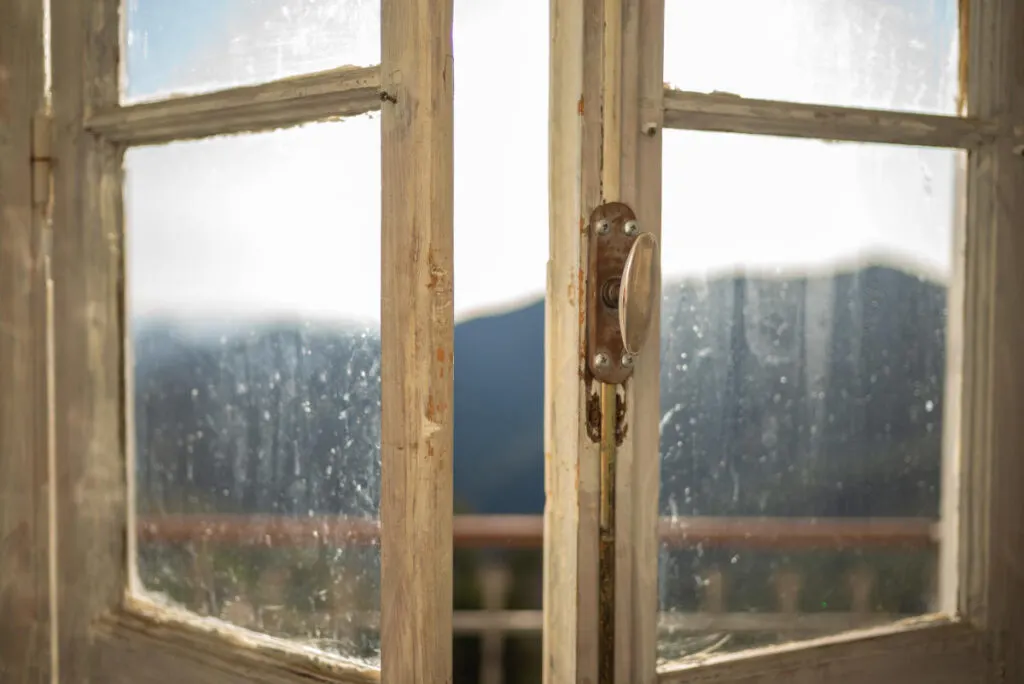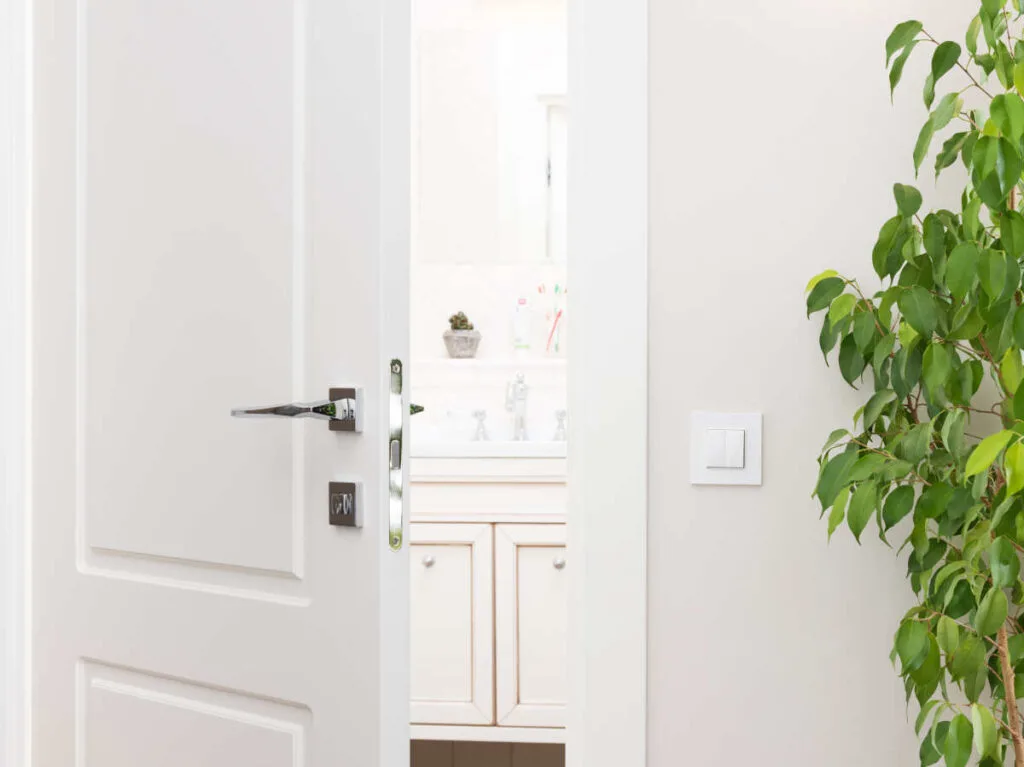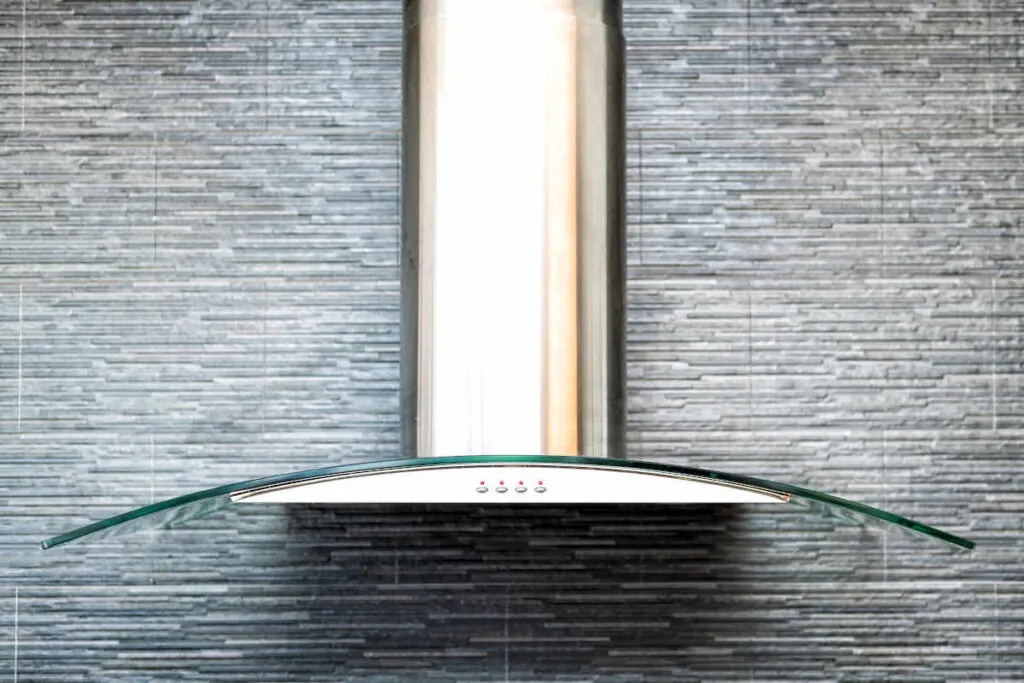Not all bathrooms have fans, and installing them after the bathroom has been designed and built can be challenging and invasive. But keeping the moisture levels in your bathroom to a minimum is crucial from a structural and a health point of view. This article lists 12 different ways in which you can keep your bathroom dry without having to install a fan.
1. Use a Dehumidifier
A dehumidifier is a machine that is designed to pull moisture from the air, which makes it an excellent alternative to an extractor fan in your bathroom, although it is not without its drawbacks.
The main disadvantage of dehumidifiers is that they can be quite bulky, so if you have a small bathroom, you will have to find a mini-dehumidifier(amazon), which will obviously have limited capacity.
For more options, visit Best Dehumidifiers for a Bathroom Without Fan.
Another factor you have to consider is that a dehumidifier is only an excellent alternative to an extractor fan if it is used in conjunction with other methods of moisture removal. You can read more on this in my article Can a Dehumidifier Be Used Instead Of a Bathroom Fan?
How Does a Dehumidifier Work?
A dehumidifier draws moisture-containing air into itself using a fan. Inside, there are refrigerated or cooling coils. As the humid air passes over these coils, it cools down, and water is forced to condense because cold air is not capable of holding as much moisture as warm air.
What Happens to the Water That Has Been Removed From the Air?
For some dehumidifiers, the condensed water is collected in a container in the unit, and you will have to empty it out regularly. For others, the unit is connected to the drain, and the water is discharged into the drain directly.
2. Moisture-Absorbing Powders
As a non-electric alternative to a dehumidifier, you can purchase a tub of moisture-absorbing powders. These powders can even be scented and act as functional potpourri in your bathroom!
Moisture-absorbing powders(amazon) can be put into open containers and placed around your bathroom. Alternatively, you can put them into breathable sacks—an old pair of pantyhose would work.
The drawback to this option is that you will have to replace the powders quite frequently, especially if you have many people using the same bathroom.
The Best Location for Moisture-Absorbing Powders
It can be beneficial to put the containers or sacks higher up on shelves, the shower wall (if you have a solid shower wall), etc.
The idea behind the elevated location is that steam rises, so the powders can catch the moisture faster than if it only reaches the powders once it starts to condense and sink. This means that there is less time for it to cause moisture damage.
However, you do also want to make sure that the powders are not put where they can be splashed. This will quickly saturate the powders, preventing them from absorbing moisture from the air.
3. Open a Window

If you have a bathroom window, then opening it can help you to get rid of most of the unwanted moisture from your bathroom.
However, you need to remember to open the window before you shower for this option to be truly effective. If you only open the window after your shower or bath, then the steam has already built up and wet everything, and it will take longer for your surfaces, etc., to dry.
The drawback of opening a window is that you will always be showering or bathing with a window open. This can be really cold during winter, and in some cases, it can also become a privacy issue. However, there is a solution to this: window vents.
Install a Window Vent
You can install a window vent into your bathroom window. This way, you do not have to have the window standing open while you shower.
If you have cottage-panes, then you can simply replace one of these with a vent. However, if you only have large panes, you will have to cut into these to install the window vent.
A bathroom window vent can be turned on and off, just like a regular ceiling vent. But the air is pulled directly outside instead of through ducting. You can even get a vent that turns on automatically when it senses the moisture level getting too high in the bathroom.
4. Leave the Door Open

There are several reasons why you should leave the bathroom door open after you shower or bath. Most of these reasons are linked to how it is a simple yet effective tip for keeping your bathroom dry when you do not have a fan.
The open door allows the moisture-laden air to move out of the bathroom and throughout the rest of the house, mixing with the less moist air and minimizing the risk of water damage and mold or mildew.
If privacy is not going to be an issue, then actually, the best way to use this technique is to leave the bathroom door open while you are showering or bathing. This prevents the initial build-up of steam, which takes longer to dissipate.
5. Run Range Hood to Get Rid of Excess Moisture

You can run your kitchen range hood to get rid of excess moisture from your bathroom. The effectiveness of this technique is dependent on how close your bathroom is to your kitchen.
It would be more beneficial if you opened your window slightly to create airflow that moves the moisture-containing air out of the bathroom and towards your range hood. Opening the window will also allow moist air to disperse to the outside.
This is a good alternative technique to simply opening the bathroom window if the outside air is already humid.
If you do not have a bathroom window, then you can set up a normal box or floor fan to blow the moisture-laden air out of the bathroom.
Aside from the limited effectiveness of this technique, another disadvantage is that running your range hood creates noise. As kitchens these days are often the hub of living space, this can be frustrating.
6. Run Whole House Ventilation
If you have whole-house ventilation installed, but you just do not have a fan in your bathroom specifically, then running your house ventilation will still be effective.
If you do not have it running continuously, then the best method is to turn it on beforehand and leave the bathroom door open while you are showering or bathing.
Once again, this creates the issue of privacy. So, if it is not possible to leave the door open during your shower or bath, just make sure that you leave the door open afterward.
Another option is to install a door vent which will allow air to easily move out of the bathroom.
Opening the bathroom door allows the system to pull the air out of the bathroom and into the ducts.
As with running your range hood, you can open the bathroom window or set up a portable fan to help push the moist air out of the bathroom towards the house vents.
7. Use a Shower Curtain to Limit the Spread of Water

Nowadays, cubicle-less showers and screen shower doors are quite popular—they give the bathroom a chic, minimalist look, which many people prefer. However, if you do not have a bathroom fan, then you should have a shower curtain or a full cubicle.
Water that is kept in the shower can drain away, but water on the floor or other surfaces in the bathroom will collect. So, if you do not have a bathroom fan, then one of your goals should be to stop water splashing out of the shower while you are using it. A shower curtain or full cubicle are the best ways to achieve this.
Be sure to buy a mildew-resistant(amazon) shower curtain to keep the curtain free from any mold or mildew stains.
Hang the Shower Curtain High
The shower curtain or cubicle wall should extend higher than your showerhead. In fact, in this case, the higher, the better because it also helps to contain the steam created by a hot shower. This steam then condenses in the shower and can drain away.
Keep the Shower Curtain Closed
Another shower curtain-related tip for keeping your bathroom dry is to leave your shower curtain closed. When you open it, you create folds and creases in which water can collect, slowing the drying process.
8. Keep the Wet Towels out of the Bathroom
Wet towels can become a significant source of moisture in your bathroom, which creates a vicious cycle. Your bathroom air is humid because your towels are wet, and your towels stay wet for longer because your bathroom air is so humid.
The best solution is to keep your wet towels out of the bathroom. This is easier to do with bath towels or bath sheets because you only use them once or twice a day.
However, your hand towels can also become wet and add to your bathroom moisture problem, so you should replace your hand towel every day or every second day. But you can just put them in the sun or the dryer, so you do not constantly have to wash them.
Don’t forget about your bath or shower mat. Additionally, it might be beneficial to switch from fabric window curtains to non-fabric blinds.
Health Benefits of Removing Wet Towels From the Bathroom
Not only does removing your wet towels from your bathroom help to keep the bathroom dry, but it also has health benefits. A perpetually wet towel can quickly become a breeding ground for bacteria, which you then use on your face and body.
It’s best to get your towels dry as quickly as possible.
9. Dry Walls/Floor After Taking a Shower
When you do not have a bathroom fan, it is a good idea to develop the habit of manually drying your walls and floor with a squeegee(amazon) and a towel after you take a shower. You may need to wait until the steam has condensed so that you don’t have to come back again and again.
This physically removes the water from the largest surfaces in the bathroom that do not have a drain, protecting these surfaces from water damage and limiting the amount of sitting water that can be evaporated into the bathroom air.
But, as per tip number eight, don’t leave the towels you used to dry the walls and floor in your bathroom!
Install Water-Resistant Tile or Use Water-Resistant Paint
Wiping your bathroom walls and the floor is a great step, but if your walls and floor are covered in water-resistant tiles or paint, then this job is so much more effective. Why?
Any kind of porous tile or non-water-resistant paint will not repel water; it will absorb it. This means that by wiping the walls and floor, you are only removing the water from the surface and not the water that has infiltrated deeper.
Water-resistant tiles and paint prevent this infiltration, so you remove more water when you wipe the surface.
10. Take Shorter and Cooler Showers

Water in the bath or the shower is not the problem. As mentioned earlier, this water drains away. The problem is mostly related to steam and splashed water. Steam is what this technique addresses.
A shorter shower simply means that there is less time for steam to be produced and build up in the bathroom.
Steam is evaporated water, and as you know, water evaporates when it heats up. Thus, a cooler shower means that less steam will be produced. You do not have to have a cold shower; just reduce the temperature a little.
The obvious drawback of this method is that you don’t get to have a hot shower if this is what you prefer.
11. Limit Consecutive Showers
If you live by yourself, then you do not have to consider the effects of consecutive showers. If, however, you live in a home with many people, then try to space out your showers to allow for sufficient airing and drying time in between.
People showering directly after one another not only increases the amount of steam and moisture produced, but it also means that the bathroom door is going to be closed for longer, which just causes the moisture to build up.
Even if you leave some time between showering, you should also do things like wiping the walls and floor after each person, removing the wet towels, opening a window, etc.
12. Ensure Your Tub and Shower Have Proper Drainage
We have spoken about how water in the shower or bathtub will not be a big problem because of their drainage systems. However, if these get clogged up, and the water does not drain away or takes longer to drain, then this can increase the amount of moisture in your bathroom.
You should regularly clean out your drains and address any blockages as soon as you notice such a problem is developing.
For people with long hair, it is a good idea to install a hair catcher(amazon) in your drain. This will make it very easy to clear out any hair that will inevitably collect in the drain.
Alternatively, you can simply clear out the hair from the top part of the drain each time you shower instead of leaving it to get pushed lower and build up in a place where you can’t reach it.
13. Reassess the Bathroom Door Design
Let’s not give all the attention to exhaust fans, shall we? We can use bathroom doors to our advantage when trying to improve ventilation inside the room. How?
Well, the first step would be to leave the bathroom door open after a shower. This is much more practical if the bathroom door swings inward.
The second step would be to look into alternative door designs, which can partially make up for a lack of windows in your bathroom if you are in that situation.
Instead of installing a normal swinging door, maybe consider a sliding barn door (amazon link) without a frame allowing more passive airflow into the bathroom from the surrounding hallways and rooms.
You could also build doors with larger gaps at the top and bottom to allow more air in and allow for some humidity to escape. If you want to go old school, you may want to consider shopping around for louver door (amazon link).
Alternatively, you can simply install a louver (amazon link) in your current bathroom door. Louvers come in a variety of sizes and colors, so you can choose one that goes well with your interior.
Mix and Match Techniques
These 12 tips for keeping your bathroom dry when you do not have a fan do not have to be used separately.
In fact, the more techniques you employ simultaneously, the better moisture control you will have in your bathroom. Some of the tips could even be beneficial for bathrooms that do have fans. After all, preventing excess moisture, in turn, prevents damp, mold, and yellow stains on bathroom walls, so anything that helps, is worth it! You can also think about ways to increase ventilation and reduce odors, which will contribute to that fresh feel in your bathroom.
Sources
https://www.hunker.com/12470260/how-to-dehumidify-a-bathroom-without-an-exhaust-fan
https://build.com.au/exhaust-fans


